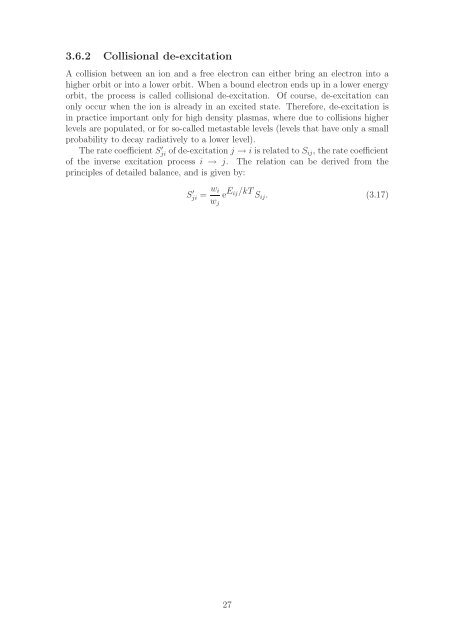Thermal X-ray radiation (PDF) - SRON
Thermal X-ray radiation (PDF) - SRON
Thermal X-ray radiation (PDF) - SRON
You also want an ePaper? Increase the reach of your titles
YUMPU automatically turns print PDFs into web optimized ePapers that Google loves.
3.6.2 Collisional de-excitation<br />
A collision between an ion and a free electron can either bring an electron into a<br />
higher orbit or into a lower orbit. When a bound electron ends up in a lower energy<br />
orbit, the process is called collisional de-excitation. Of course, de-excitation can<br />
only occur when the ion is already in an excited state. Therefore, de-excitation is<br />
in practice important only for high density plasmas, where due to collisions higher<br />
levels are populated, or for so-called metastable levels (levels that have only a small<br />
probability to decay radiatively to a lower level).<br />
The rate coefficient S ′ ji of de-excitation j → i is related to S ij, the rate coefficient<br />
of the inverse excitation process i → j. The relation can be derived from the<br />
principles of detailed balance, and is given by:<br />
S ′ ji = w i<br />
w j<br />
e E ij/kT Sij . (3.17)<br />
27
















